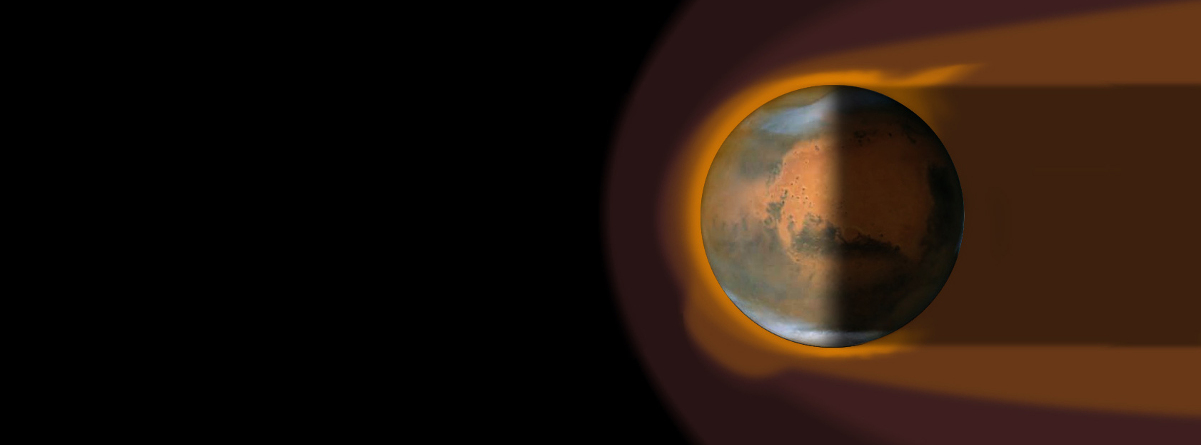Here are two articles from just the past year, each presenting diametrically opposed findings. This is science! And it’s what makes trying to write accurate science fiction such a pleasant challenge.
First some background:
- We’re pretty sure Mars had a much denser atmosphere and surface water 3-4 billion years ago. We come to this conclusion based on geologic evidence of a hydrologic cycle (i.e. flowing water) on the surface.
- Our sun generates a solar wind, a continuous stream of charged particles that blows against the planets of the solar system.
- Earth’s molten iron core interacts with the planet’s rotation to generate a magnetic field around the planet. This magnetic field is called a magnetosphere. More specifically, it is called an intrinsic magnetosphere because it is generated by the planet itself. This intrinsic magnetosphere protects the atmosphere from the full brunt of the solar wind. Mars no longer has a molten core, ergo, no intrinsic magnetosphere.
- When a planet is unprotected by an intrinsic magnetosphere, the solar wind directly interacts with the upper atmosphere, also called the ionosphere, transferring its energy to ions there and essentially blowing them away. Another effect of this interaction between the solar wind and the planet’s ionosphere is the creation of a magnetic field that surrounds the planet. This magnetic field is called an induced magnetosphere because it is generated by a force external to the planet. It is assumed to be too weak to offer the ionosphere any protection from the force of the solar wind.
It has long been hypothesized that the loss of Mars’ intrinsic magnetosphere allowed the solar wind to strip away the Martian atmosphere. A paper published in the journal Science in March 2017 presents data from NASA’s MAVEN mission (https://www.nasa.gov/mission_pages/maven/main/index.html) that supports this hypothesis. That paper (http://science.sciencemag.org/content/355/6332/1408) is behind a paywall, but is paraphrased here (https://www.sciencedaily.com/releases/2017/03/170330142211.htm).
But hold on. In December 2017, a doctoral student in Sweden presented a dissertation that refutes this idea, based on data from the Swedish ASPERA-3 instrument on the European Space Agency’s Mars Express mission (http://www.esa.int/Our_Activities/Space_Science/Mars_Express). Data from this instrument, collected since 2004, indicates that the induced magnetosphere is actually providing more protection than expected. Consequently, it does not appear that the solar wind has been instrumental in the loss of the Martian atmosphere. The abstract for that dissertation is here (http://umu.diva-portal.org/smash/record.jsf?pid=diva2%3A1157328&dswid=3495), and is paraphrased nicely here (https://phys.org/news/2017-12-mars-atmosphere-solar.html).
Understanding the fate of the Martian atmosphere is critical to any efforts at terraforming Mars in the distant future. In terms of our more immediate efforts to put humans on the surface, it is also important for us to understand the degree of protection from solar wind and radiation provided by the current Martian atmosphere. Clearly, there is more work to be done on this topic.
In Generation Mars, I am trying to write fiction that stays close to our current understanding and technology. Time and again, as I work on the series, some new study will call into question an assumption I’ve made. This can be frustrating, but it is also great fun to be writing so close to the edge. Just as often, I will stall on some plot point and stumble across a study that opens a whole new approach. So, it evens out.
My hope is that the stories will transcend the science and still be interesting to the kids that know better, growing up on Mars in the future.


